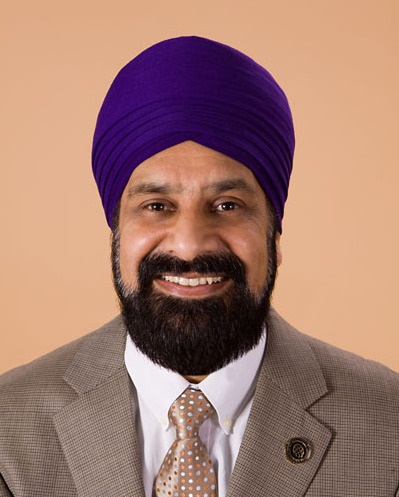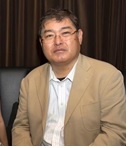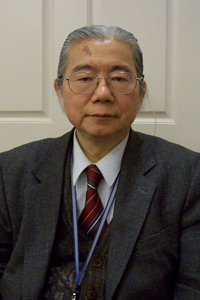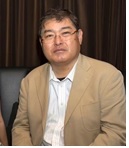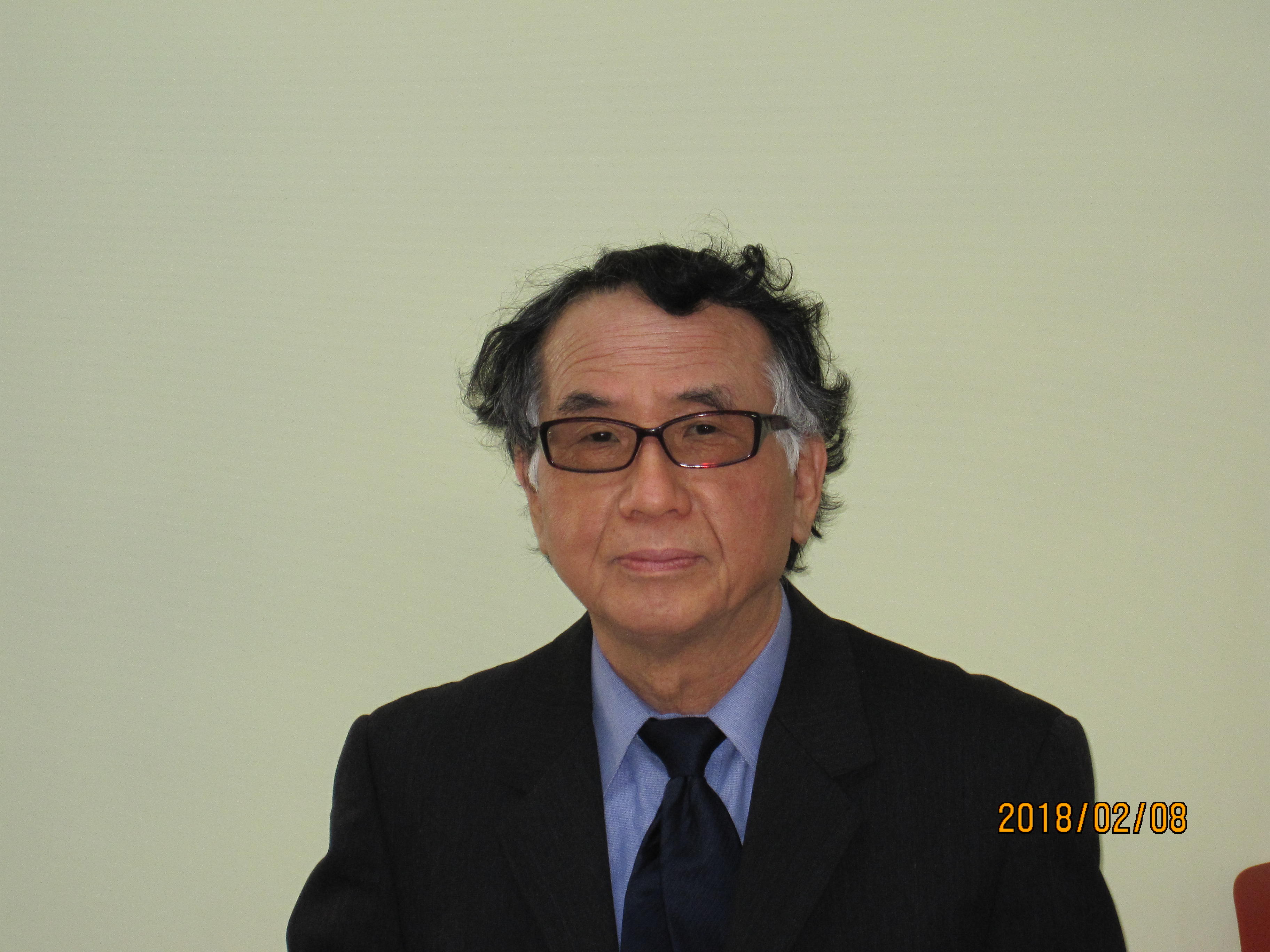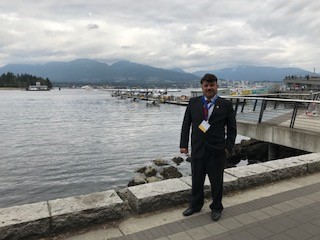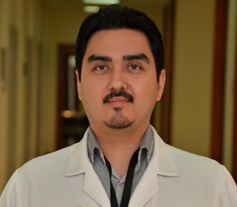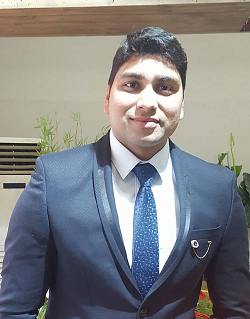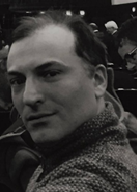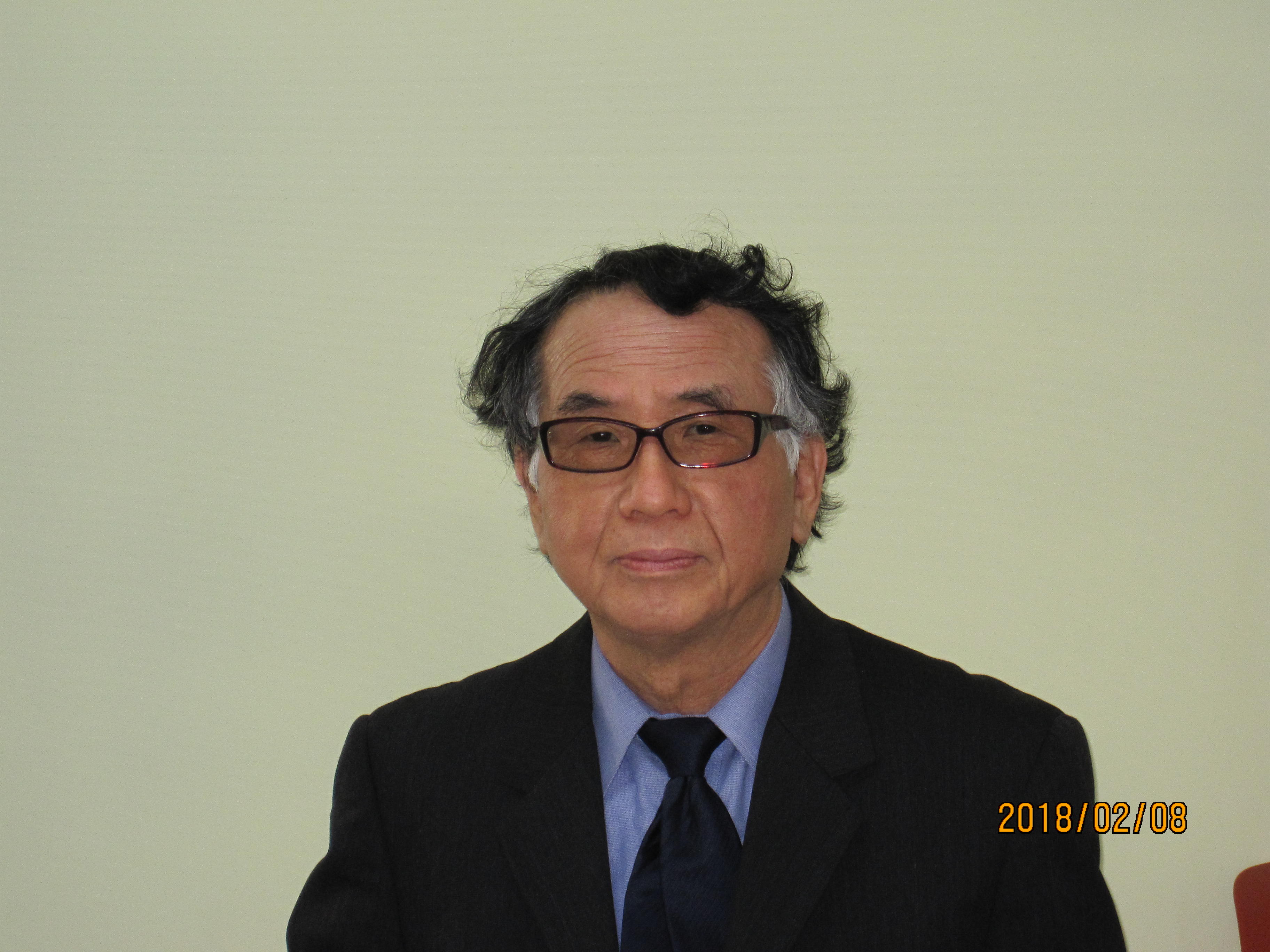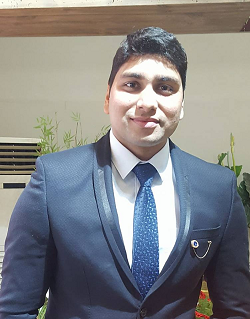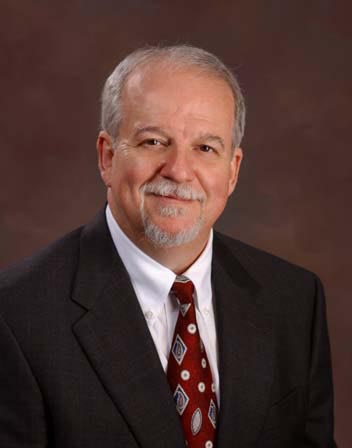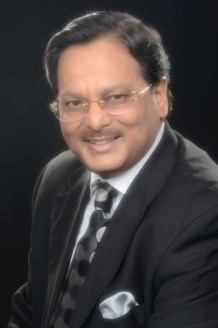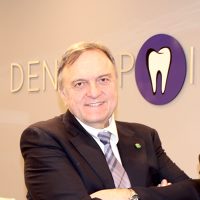Scientific Program
Keynote Session:
Title: Long term follow up of non-surgical upper airway remodeling for obstructive sleep apnea: Case report
Biography:
Professor Dave Singh is a US citizen who was born, educated and trained in England, UK. He holds three doctorates, including Doctor of Dental Medicine; a Ph.D. in Craniofacial Development, and a D.D.Sc. in Orthodontics. He was invited to relocate to the Center for Craniofacial Disorders, USA on the basis of being an “outstanding professor”, where he led a NIH-funded program of craniofacial research, focusing on cleft lip and palate and other craniofacial anomalies. Currently, he is a member of the American Sleep and Breathing Association, World Sleep Federation, an Academic Fellow of the World Federation of Orthodontists, and Fellow of the International Association for Orthodontics, where he was awarded prizes in 2005, 2013 and 2014. Dr. Singh holds several patents in the USA, Canada and Europe as well as international patents. He has published more than 200 articles and books in the peer-reviewed medical, dental and orthodontic literature, and has lectured in Australia, Asia, Europe, Africa and North America. Presently, Dr. Singh is President of Vivos BioTechnologies, Inc.
Abstract:
In this study, we investigated long-term changes in upper airway morphology to test the hypothesis that the upper airway can be non-surgically remodeled over time in adult patients diagnosed with obstructive sleep apnea (OSA).
After obtaining informed consent, we undertook a 3D cone-beam (CBCT) scan of a 56-year-old male patient, who had been diagnosed with OSA by a sleep specialist prior to treatment. The patient was treated using a FDA-cleared, biomimetic oral device (DNA appliance®), which provided midfacial redevelopment in combination with mandibular repositioning. The patient wore the device for about 12-16hrs per day, and the overall treatment time was 18 months approx. During this time, the device was adjusted every 4-6 weeks to maintain its efficacy. Volumetric 3D reconstruction of the upper airway from the CBCT scan was undertaken prior to treatment, and the patient was monitored with a follow up CBCT scan 5.5yrs later, which was analyzed in the same way. All CBCT scan measurements were taken with no device in the patient’s mouth during wakefulness.
The CBCT scan analysis revealed that the minimum distance of the inferior turbinate from the nasal septum increased on the right side from 1.1mm to 2.5mm; and on the left side from 1.4mm to 2mm. Similarly, the surface area of the posterior nasal apertures at the level of the posterior nasal spine in the coronal plane increased from 487.5mm2 to 569mm2. The minimum transpalatal bone width also increased from 37mm to 41.5mm, while the medio-lateral retropalatal airway width increased from 4.5mm to 29mm; and the minimal antero-posterior retropalatal distance increased from 1.5mm to 11mm in the mid-sagittal plane. Therefore, the minimum cross-sectional retropalatal airway area increased from 67mm2 to 477.5mm2. In addition, the minimum antero-posterior retroglossal distance increased from 6mm to 17mm in the mid-sagittal plane; the minimum medio-lateral retroglossal width increased from 14.5mm to 26.5mm in the coronal plane, and subsequently the minimum retroglossal area in the axial plane at the same level as above increased from 83.5mm2 to 423.5mm2. Overall, the results showed that the upper airway volume increased from 13.9cm3 to 29.2cm3 over a period of 5.5yrs with no device in the patient’s mouth when the measurements were taken.
This biomimetic device and novel protocol has previously been used to treat OSA in the short term. Specifically, the device has been shown to increase midfacial bone volume and nasal airway volume in adult patients. In fact, it appears to have successfully treated OSA in adults since no appliance was in the mouth when the sleep studies were performed. We conclude that biomimetic oral appliance therapy may be able to non-surgically remodel the upper airway in adult patients diagnosed with OSA, and may represent an anti-aging protocol that might maintain upper airway integrity and functionality as a patient undergoes aging. Further studies are required to corroborate the current findings.
Title: Chronic dermal disease related to dental focal infections
Biography:
Abstract:
The number of patients that visit our clinic with metal allergy as chief complaint have increased over the years. This is increase is in part due to the number of recent reports from the media that have sensationally been released. Owing to this, dental professionals now focus more on metal allergy and their relation to dermal symptoms and recommend patients to be patch tested for metal allergy. In some cases, the dermal symptoms have significantly improved after the metal free dental restorations, however, in other cases, it is not that simple. For example, some patients diagnosed with Pustulosis palmoplantaris (PPP) do not show an improvement of the situation even if metallic fillings are replaced with non-metals. Moreover, some other patients with PPP do not even respond to the patch testing with a large series of metal allergens. In this kind of situation, metal allergy may not be the direct cause for dermal symptoms. We have experienced that in some of these cases, endodontically treating the periapical lesions improve the refractory dermal symptoms, which is in accordance to the literature. This suggests that dental focal infection is associated to some dermal symptoms such as the PPP. Although clinically, we suspect that dental focal infection is the primary reason for the PPP, there is a lack of concrete evidence in the literature. In this lecture, chronic dermal diseases showing metal allergy-like symptoms that actually improved after endodontic treatment will be presented and discussed based on our long-term experience.
Title: Relationship between dentistry and whole body conditions
Biography:
Dr. Yoshiro Fujii is a director and chief dentist of Shin Kobe Dental Clinic. 1985:D.D.S. (Certified by Japanese Health Ministry).1989: He received Koide prize. Finished graduate school, Nagoya, Japan. and Ph.D (Aich Gakuin University Graduate school, Nagoya). 2000: Dr. Fujii began to run Shin Kobe Dental Clinic (Kobe, Japan). 2009: Fellow of the international college of acupuncture and electro-therapeutics (F.I.C.A.E). 2013,2014: 100 next era CEOs in Asia (Japan times). 2014: Editioriall board member of Savvy Science Publisher. 2015: Editorial board member of British Journal of Medical Research.. 2015: 100 Next-era Leaders in Asia (Japan times). He has written five published works in Japanese and two in English. He is an Authorization doctor of the Japan Bi-Digital O-Ring Test. Association and a director of the Japan Society of Dental Equipment. He published eleven international academic articles in English. 2014-15: He was a chair or co-chair three times in various international congresses.
Abstract:
There is a close relationship between the oral and physical condition. Dentistry also influences the whole body health. The concept of focal infection is very old, but this concept was declining as well as evolution of antibiotics. However, an infection disease of a tooth root apex or periodontitis has a harmful influence on the whole body. I will show the case of Parkinson’s disease may be caused by it. The cause of dementia is a decline of brain function. Loss of teeth or inappropriate occlusion may deteriorate brain function, so it is possible to improve dementia by occlusal treatment by means of artificial teeth etc. Focus of infection in oral area or allergy of dental materials especially metals may cause dermatitis. Occlusion (biting situation) is very fundamental concept of dentistry. However, ideal occlusion for the whole body health has not clarified yet. I believe one of the best methods to search the ideal occlusion is Bi-Digital O-Ring Test. This method is one of the muscle reflections, so it is easy and safe. This test is useful to select the biocompatible dental materials, too. Elements of dentistry which influence whole body health are variety. Recently, it is clarified that periodontitis and diabetes influence each other mutually. Sports players are required to wear the mouse guards by several sports. Occlusal condition is changed by it, therefore the quality of mouth guard influences the whole body condition or supports performance. Making ideal occlusion may promote supports performance.
Title: Basic principles of Bi-Digital O-Ring test
Biography:
Abstract:
Title: Relationship between dentistry and whole body conditions
Biography:
Dr. Yoshiro Fujii is a director and chief dentist of Shin Kobe Dental Clinic. 1985:D.D.S. (Certified by Japanese Health Ministry).1989: He received Koide prize. Finished graduate school, Nagoya, Japan. and Ph.D (Aich Gakuin University Graduate school, Nagoya). 2000: Dr. Fujii began to run Shin Kobe Dental Clinic (Kobe, Japan). 2009: Fellow of the international college of acupuncture and electro-therapeutics (F.I.C.A.E). 2013,2014: 100 next era CEOs in Asia (Japan times). 2014: Editioriall board member of Savvy Science Publisher. 2015: Editorial board member of British Journal of Medical Research.. 2015: 100 Next-era Leaders in Asia (Japan times). He has written five published works in Japanese and two in English. He is an Authorization doctor of the Japan Bi-Digital O-Ring Test. Association and a director of the Japan Society of Dental Equipment. He published eleven international academic articles in English. 2014-15: He was a chair or co-chair three times in various international congresses.
Abstract:
There is a close relationship between the oral and physical condition. Dentistry also influences the whole body health. The concept of focal infection is very old, but this concept was declining as well as evolution of antibiotics. However, an infection disease of a tooth root apex or periodontitis has a harmful influence on the whole body. I will show the case of Parkinson’s disease may be caused by it. The cause of dementia is a decline of brain function. Loss of teeth or inappropriate occlusion may deteriorate brain function, so it is possible to improve dementia by occlusal treatment by means of artificial teeth etc. Focus of infection in oral area or allergy of dental materials especially metals may cause dermatitis. Occlusion (biting situation) is very fundamental concept of dentistry. However, ideal occlusion for the whole body health has not clarified yet. I believe one of the best methods to search the ideal occlusion is Bi-Digital O-Ring Test. This method is one of the muscle reflections, so it is easy and safe. This test is useful to select the biocompatible dental materials, too. Elements of dentistry which influence whole body health are variety. Recently, it is clarified that periodontitis and diabetes influence each other mutually. Sports players are required to wear the mouse guards by several sports. Occlusal condition is changed by it, therefore the quality of mouth guard influences the whole body condition or supports performance. Making ideal occlusion may promote supports performance.
Title: Chronic dermal disease related to dental focal infections
Biography:
Abstract:
Oral Session 1:
- Bi-Digital O-Ring Test (BDORT) | Oral and Maxillofacial Surgery | Orthodontics and Dental Implants | Periodontics and Oral Hygiene | Diagnosis and Prevention of Oral Disease| Prosthodontics | Oral and Dental Health
Title: Dental treatment for Hebarden's node
Biography:
Abstract:
Title: Factors to be considered to ensure the success of dental implants
Biography:
Prof.Dr Rashad Murad currently serves as Ambassador of ICOI-Syria. He is the Chief Director of Dental Association in Damascus. , Professor at Damascus University, Inventor of "Murad Bridge in Dentistry", General Manager and owner of Advanced Dental Care Syria For Treatment and Cosmetic Dentistry Center.
Abstract:
Dental implants are by far the best choice for tooth replacement. They should closely mimic the function of natural teeth. Modern implants have high success rate – about 95%- when they are inserted properly and followed up so they can last for lifetime. So many factors and considerations influence the success of dental implants, These include treatment-planning, surgical, and prosthetic keys.
When considering patient selection and implant treatment planning, there are several factors that must be considered when using implant therapy. Beyond the simple idea of replacing a missing tooth with an implant, a careful analysis of patients’ oral and systemic health, the amount of residual supporting tissues, and the planned restoration must all factor into the planning of dental implants. Much of this information can only be accurately obtained by careful and diagnostic photographs and models followed by diagnostic wax-up of the planned prosthesis. Using the Rules of Six and the Rules of 10, it is possible to plan for implant restorations that have sufficient restorative space to not only provide an aesthetic outcome but also provide for prosthetic longevity leading to great success.
Title: New Approach in Endodontic Retreatment By Intentional Replantation
Biography:
I am author of some scientific articles in reputed journals. I have presented number of dental lectures, as well as dental courses in and out of Saudi Arabia.
Abstract:
Title: Orthodontic extrusions of impacted incisors from unacceptable to acceptable smiles
Biography:
Abstract:

Niladri Maiti
Department of Conservative Dentistry & Endodontics, Guru Nanak Institute of Dental Science and Research, IndiaTitle: The Dynamic Duo Treatment Modality of Tooth Hypersensitivity
Biography:
Dr. Niladri Maiti has completed his BDS and MDS in Conservative Dentistry & Endodontics. He did his basic laser training from Society Of Oral Laser Application, SOLA, Vienna (Module I & II) followed by Basic Laser Certification from WLFD (World Federation of Laser Dentistry). He has completed his one year post graduate Diploma in Laser Dentistry from university of Genova, Italy followed by M.Sc in Laser Dentistry from University of Genova, Italy. He has received numerous training in Laser in Oncology , Photo active disinfection etc. In the quest of using multiple wavelength and exploring laser he got his Fellowship In Aesthetic Medicine from University of Greifswald , where he got his training of laser in various cosmetologic & dermatological applications . He also did his Masters in Bioscience and Certification in Oral Implantology from Biohorizons. He is also a Speaker & Key Opinion Leader of Coltene, Whaledent . He has numerous national & international publications. He is also a invited speaker in state and national conferences. He is the youngest dental professional from India to hold a M.Sc in Laser Dentistry. He is also the first to achieve combined effect of bioglass and laser in desensitization of tooth in his M.Sc thesis in University of Genoa, Italy.
Abstract:
Dentin Hypersensitivity is a common condition that is frequently encountered in dental practice. The goal of treatment of dentinal hypersensitivity ideally should be the restoration of the original impermeability of the dentinal tubules and the relief of dentinal hypersensitivity experienced by the patient or at least to reduce the level of discomfort to enable the patient's quality of life to be maintained. Bioglass has the effectiveness of mineralization and infiltration of dentinal tubules. .Laser treatment in dentin hypersensitivity is an interesting and controversial issue and many investigations have been done on its mechanism of action, advantages, and unclear points. This novel treatment approach aims at the assimilation of both bioglass & laser in providing a viable treatment option for dentin hypersensitivity.
Title: New approach in endodontic retreatment by intentional replantation
Biography:
Abstract:
Intentional replantation (IR) is a concept that has been known for over a thousand years, it is defined by Grossman (1966) as an atraumatic extraction of a tooth and its reinsertion into its socket immediately after endodontic treatment and apical repair is done extra-orally. Some authors consider intentional replantation to be a last option; whereas others consider, it was another treatment modality. However, in cases where a dental implant, non-surgical retreatment or surgical treatment is not possible, intentional replantation may be a viable treatment option. Recent case reports have demonstrated that, with good case selection, intentional replantation can be a reliable and predictable procedure. The sensitive portion of the treatment is removal of the tooth traumatically. In the presentation, some cases of Intentional replantation will be reviewed that show the feasibility of the procedure in different situations.
Title: The dynamic Duo treatment modality of tooth hypersensitivity
Biography:
Abstract:
Dentin hypersensitivity is a common condition that is frequently encountered in dental practice. The goal of treatment of dentinal hypersensitivity ideally should be the restoration of the original impermeability of the dentinal tubules and the relief of dentinal hypersensitivity experienced by the patient or at least to reduce the level of discomfort to enable the patient's quality of life to be maintained. Bio-glass has the effectiveness of mineralization and infiltration of dentinal tubules. Laser treatment indentin hypersensitivity is an interesting and controversial issue and many investigations have been done on its mechanism of action, advantages and unclear points. This novel treatment approach aims at the assimilation of both bioglass and laser in providing a viable treatment option for dentin hypersensitivity.
Title: Clinical anatomy of hand and fingers in terms of acupuncture applications
Biography:
Abstract:
Title: 5 cases which were dramatically improved body issues by Fujii’s method by means of Bi-digital O-ring test
Biography:
TBU
Abstract:
Title: Association of Candida albicans in development of oral cavity infection in North Indian population
Biography:
Abstract:
Title: Root canal perforation; causes, prognosis, classification, Diagnosis, repair material and clinical Managemnt; A quick Reviewanagement- A quick review
Biography:
Abstract:
Title: The harmful influence of whole body when dental treatment materials is worked as an antenna of electromagnetic waves
Biography:
Ai Harada has completed his graduation in Dentistry from Tokushima University, Japan.
Abstract:
The patient has presented with the neck pain stretching out to the shoulder area, the pain increases when the left arm is stretched to the back. Her left toes also sometimes go numb. Some example of electromagnetic hypersensitivity (ES) symptoms are muscle pain, going the body stiff, etc., so it was examined whether her symptom changed when her mouth was covered with aluminum foil decreasing electromagnetic waves. As a result, her left arm pain stretched to the back was disappeared immediately after her mouth was covered with the aluminum foil. Therefore, at this case, the pain could be caused not by heavy metal contamination and malocclusion but by collected electromagnetic waves. The most influenced dental treatment material around was a dental amalgam filling. The dental amalgam filling was removed under the protective covering. After removing the dental amalgam, the pain was decreased and enlarged range of motion. In addition, the numbness of her left toes improved. Because the symptom decreased immediately after removing amalgam filling, the cause of the pain and the range of motion could be more harmful effect of electromagnetic waves than heavy metal contamination. With the electro-mobiles, smartphones, personal computers, etc. are popular, the amount of electromagnetic waves come large, so in dental treatments the effects of electromagnetic waves must be considered.
Title: The harmful influence of whole body when dental treatment materials is worked as an antenna of electromagnetic waves
Biography:
Ai Harada has completed his graduation in Dentistry from Tokushima University, Japan.
Abstract:
The patient has presented with the neck pain stretching out to the shoulder area, the pain increases when the left arm is stretched to the back. Her left toes also sometimes go numb. Some example of electromagnetic hypersensitivity (ES) symptoms are muscle pain, going the body stiff, etc., so it was examined whether her symptom changed when her mouth was covered with aluminum foil decreasing electromagnetic waves. As a result, her left arm pain stretched to the back was disappeared immediately after her mouth was covered with the aluminum foil. Therefore, at this case, the pain could be caused not by heavy metal contamination and malocclusion but by collected electromagnetic waves. The most influenced dental treatment material around was a dental amalgam filling. The dental amalgam filling was removed under the protective covering. After removing the dental amalgam, the pain was decreased and enlarged range of motion. In addition, the numbness of her left toes improved. Because the symptom decreased immediately after removing amalgam filling, the cause of the pain and the range of motion could be more harmful effect of electromagnetic waves than heavy metal contamination. With the electro-mobiles, smartphones, personal computers, etc. are popular, the amount of electromagnetic waves come large, so in dental treatments the effects of electromagnetic waves must be considered.
Oral Session 2:
- Workshop
Title: Light up your practice with laser
Biography:
Abstract:
Keynote Session:
Title: Office-Based Anesthesia: Safety and Outcomes in Pediatric Dental Patients
Biography:
Dr. Jones is presently the Starkey Research Professor, Department of Pediatric Dentistry, Indiana University School of Dentistry and Clinical Professor of Pediatrics, Indiana University School of Medicine. From 1993 to 2005, he was Dean of the School of Health Sciences, Indiana University Purdue University, in Fort Wayne, Indiana. He is a Fellow of the American Academy of Pediatric Dentistry, Fellow of the American College of Dentists, Fellow of the International College of Dentists and a member of the Pierre Fauchard Academy.
Dr. Jones has published over 100 articles, book chapters and research abstracts in the dental, medical and education literature. He has obtained over 6.3 million dollars in educational, service, training and research grants. He has presented over 150 continuing education courses in the United States, the Caribbean, Europe, Asia, South America and the Middle East on a variety of topics related to higher education.
Abstract:
The number of children with caries requiring general anesthesia to achieve comprehensive dental care and the demand for dentist anesthesiologists to provide ambulatory anesthesia for these patients is increasing. In 2010, the Society for Ambulatory Anesthesia Clinical Outcomes Registry was developed. This Web-based database allows providers of ambulatory anesthesia to track patient demographics and various outcomes of procedures. This presentation reviews a secondary analysis of data collected in the registry over a 4-year period, 2010–2014. Of the 7041 cases reviewed, no cases resulted in serious complications, including death, anaphylaxis, aspiration, cardiovascular adverse events, or neurologic adverse events. Of the 7041 cases reviewed, 196 (3.0%) resulted in a predischarge or postdischarge adverse event. The predischarge adverse event occurring with the highest frequency was laryngospasm, occurring in 35 cases (0.50%). The postdischarge adverse event occurring with the highest frequency was nausea, reported by 99 patients (5.0%) for the 1991patients reached for follow-up by the dentist anesthesiologist following their procedure. This analysis provides strong clinical outcomes data to support the safety of office-based anesthesia as performed by dentist anesthesiologists in the treatment of pediatric dental patients. Example of a “typical” patient procedure will be presented for discussion.
Title: Links Between Oral and General Health : The Mouth as Early Warning System
Biography:
Abstract:
Title: The clinical utilization of Ozone Ultrafine Bubble Water to get symbiosis
Biography:
Abstract:
Periodontitis and peri-implantitis are chronic inflammatory diseases caused by microorganisms residing in subgingival biofilm. Elimination of pathogen-containing biofilms remains the primary goal of the treatment for these diseases. The topical use of a low-cost, broad-spectrum antiseptic agent with low potential for adverse reactions is preferable in treating periodontitis or peri-implantitis. Ozone (O3) is attracting attention as a possible alternative antiseptic in the dental field as well as food industries. The high stability of Ozone Ultrafine Bubble Water (OUFBW) allows for bottling and use as a disinfectant solution. In my presentation, the bactericidal activity biocompatibility against human oral cells of OUFBW will be introduced. The OUFBW possesses potent bactericidal activity against several kinds of bacteria such as periodontopathic and cariogenic bacteria and is not cytotoxic to cells of human oral tissues. The use of NBW3 as an adjunct to the therapy for periodontitis and peri-implantitis would be promising.
Polymicrobial interactions with the host in both health and disease will be discussed. So far we have attempted to identify specific bacterial clonal types of periodontal diseases, however, we have to learn more concerning their contribution to both oral health and disease. Recent studies suggested that host-associated polymicrobial communities are an integral part of us. Understanding the microbial community factors that support the associations with host tissue that contribute to periodontal health may also reveal how disbiotic oral communities disrupt periodontal tissue functions. On the other hand, periodontitis has been implicated as a risk factor for various systemic diseases. Dysbiosis in oral cavity might cause systemic changes other than the destruction of periodontal tissue. We have to develop strategies to prevent the dysbiotic state for obtaining periodontal and systemic health.
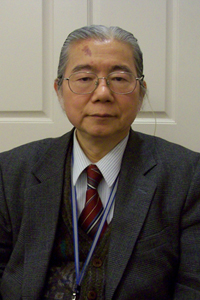
Yoshiaki Omura
President & Professor of International College of Acupuncture & Electro-therapeutics, USATitle: Basic Principles of Bi-Digital O-Ring Test
Biography:
Yoshiaki Omura received Oncological Residency training at Cancer Institute of Columbia University & Doctor of Science Degree through research on Pharmaco-Electro-Physiology of Single Cardiac Cells in-vivo and in-vitro from Columbia University. He researched EMF Resonance phenomenon between 2 identical molecules for non-invasive detection of various molecules, at Graduate Experimental Physics Dept., Columbia University, for which he received U.S. patent. He is also the creator of Bi-Digital O-Ring Test. He published over 280 original research articles, many chapters, & 9 books. He is currently Adjunct Prof. of Family & Community Medicine, New York Medical College; President & Prof. of Int’l College of Acupuncture & Electro-Therapeutics, NY; Editor in Chief, Acupuncture & Electro-Therapeutics Research, Int’l Journal of Integrative Medicine, (indexed by 17 major int’l Indexing Periodicals); Formerly, he was also Adjunct Prof. or Visiting Prof. in Universities in USA, France, Italy, Ukraine, Japan, Korea, & China.
Abstract:
Title: All on Four: Immediate Implant Loading Process in the Mandible
Biography:
Dr. Hasan Alkumru was appointed as an Associate Professor, Division of Restorative Dentistry, Discipline of Prosthodontics at the University of Western Ontario Schulich School of Medicine and Dentistry, effective September 1st, 2014.
Dr. Alkumru received his DDS (1979) in University of Ankara, Faculty of Dentistry and his PhD (1984) in Birmingham University Faculty of Dentistry UK in collaboration with Ankara University. After that he joined to Ankara University, Faculty of Dentistry as an Associate professor until 1998. He became a full time professor in Marmara University, Istanbul and worked as the Head of Department of Prosthodontics and the Vice Dean in between 1999 – 2008.
Dr. Alkumru joined to The University of Toronto in 2009. He was the Head of Department of Prosthodontics, Director of Graduate Prosthodontics Program and Director of Implant Prosthodontics Unit at the University of Toronto, Faculty of Dentistry. He mentored three master thesis related to implant prosthodontics during his service in UofT.
Dr. Alkumru is the course director of Second Year Removable Prosthodontics course and also gives several lectures to the third and fourth year students in Restorative Dentistry Courses along with other administrative roles in UWO.
He published more than 50 articles in international journals, was selected as Keynote Speaker in International Congresses and has trained and mentored graduate students in the area of Implant Prosthodontics and Biomaterials research throughout his career. Dr. Alkumru is a licensed Prosthodontist in Canada maintains an active practice in his office in Toronto, Ontario, dedicated to Prosthodontics, Implant Dentistry, and Esthetics.
Abstract:
Number of completely edentulous patients is increasing due to increased life expectancy, considerably high number of adult and elderly patients still need dental treatment for their edentulism.
Some of those patients cannot tolerate removable complete dental prosthesis and may require more sophisticated techniques
Almost all patients have information about implant supported dental prosthesis to some extent and they prefer to have this kind of dental treatment because of increased retention and stability of artificial teeth. Unfortunately because of financial restrictions a high number of edentulous patients have to postpone implant supported prosthesis option.
Osseo integration becomes an excellent treatment modality for completely edentulous patients. The better understanding of osseointegration has led to the one-stage surgeries and to minimize the period between the implant surgery and the prosthesis placement.
The maxilla requires more implants than the mandible for a fixed prosthesis although four implants are suggested for either dental arch.
In this presentation; the protocol for immediate loading and all on four treatment modality and long term outcome of immediately loaded all on four type dentures will be discussed.
Oral Session 1:
- Sessions: Restorative Dentistry and Endodontic | Occlusal Treatment | Sports Dentistry | Cosmetic Dentistry | Electromagnetic Waves and Dentistry | Focal Infection | Diabetes and Periodontal Disease | Skin Care, Metal Allergies Around Oral Area
Title: CAD / CAM in Fixed Prosthodontics and Implantology
Biography:
Abstract:
Title: Case of palmoplanter pustulousis remarkably improved by dental treatment
Biography:
Shigeo Shirono is a Director and Chief Dentist of Shirono Dental Clinic in Japan Yokohama city.

